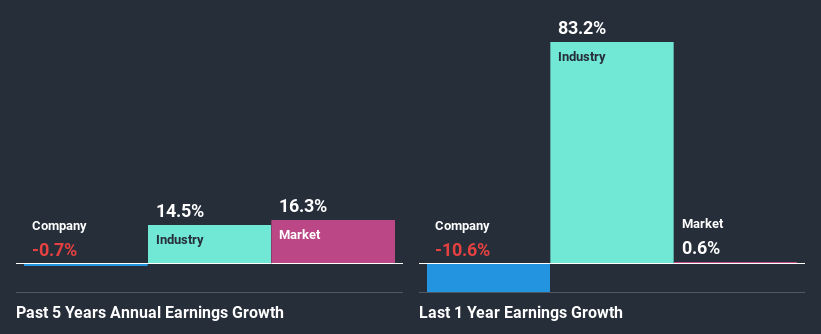Does Shaw Communications Inc.'s (TSE:SJR.B) Weak Fundamentals Mean A Downturn In Its Stock Should Be Expected?

Shaw Communications' (TSE:SJR.B) stock up by 9.3% over the past three months. Given that the markets usually pay for the long-term financial health of a company, we wonder if the current momentum in the share price will keep up, given that the company's financials don't look very promising. Particularly, we will be paying attention to Shaw Communications' ROE today.
ROE or return on equity is a useful tool to assess how effectively a company can generate returns on the investment it received from its shareholders. Put another way, it reveals the company's success at turning shareholder investments into profits.
View our latest analysis for Shaw Communications
How To Calculate Return On Equity?
The formula for ROE is:
Return on Equity = Net Profit (from continuing operations) ÷ Shareholders' Equity
So, based on the above formula, the ROE for Shaw Communications is:
11% = CA$680m ÷ CA$6.2b (Based on the trailing twelve months to May 2020).
The 'return' is the amount earned after tax over the last twelve months. Another way to think of that is that for every CA$1 worth of equity, the company was able to earn CA$0.11 in profit.
What Is The Relationship Between ROE And Earnings Growth?
Thus far, we have learned that ROE measures how efficiently a company is generating its profits. Based on how much of its profits the company chooses to reinvest or "retain", we are then able to evaluate a company's future ability to generate profits. Generally speaking, other things being equal, firms with a high return on equity and profit retention, have a higher growth rate than firms that don’t share these attributes.
Shaw Communications' Earnings Growth And 11% ROE
At first glance, Shaw Communications seems to have a decent ROE. Yet, the fact that the company's ROE is lower than the industry average of 15% does temper our expectations. Additionally, the flat earnings seen by Shaw Communications over the past five years doesn't paint a very bright picture. Not to forget, the company does have a decent ROE to begin with, just that it is lower than the industry average. So there might be other reasons for the flat earnings growth. These include low earnings retention or poor capital allocation.
We then compared Shaw Communications' net income growth with the industry and found that the average industry growth rate was 14% in the same period.
The basis for attaching value to a company is, to a great extent, tied to its earnings growth. It’s important for an investor to know whether the market has priced in the company's expected earnings growth (or decline). Doing so will help them establish if the stock's future looks promising or ominous. What is SJR.B worth today? The intrinsic value infographic in our free research report helps visualize whether SJR.B is currently mispriced by the market.
Is Shaw Communications Using Its Retained Earnings Effectively?
Shaw Communications' very high three-year median payout ratio of 102% suggests that the company is paying its shareholders more than what it is earning. The absence in growth is therefore not surprising. Paying a dividend beyond their means is usually not viable over the long term. This is quite a risky position to be in. To know the 3 risks we have identified for Shaw Communications visit our risks dashboard for free.
Additionally, Shaw Communications has paid dividends over a period of at least ten years, which means that the company's management is determined to pay dividends even if it means little to no earnings growth. Upon studying the latest analysts' consensus data, we found that the company is expected to keep paying out approximately 86% of its profits over the next three years. Therefore, the company's future ROE is also not expected to change by much with analysts predicting an ROE of 11%.
Conclusion
In total, we would have a hard think before deciding on any investment action concerning Shaw Communications. While its ROE is pretty moderate, the company is retaining very little of its profits, meaning very little of its profits are being reinvested into the business. This explains the lack or absence of growth in its earnings. With that said, we studied the latest analyst forecasts and found that while the company has shrunk its earnings in the past, analysts expect its earnings to grow, albeit marginally, in the future. To know more about the latest analysts predictions for the company, check out this visualization of analyst forecasts for the company.
This article by Simply Wall St is general in nature. It does not constitute a recommendation to buy or sell any stock, and does not take account of your objectives, or your financial situation. We aim to bring you long-term focused analysis driven by fundamental data. Note that our analysis may not factor in the latest price-sensitive company announcements or qualitative material. Simply Wall St has no position in any stocks mentioned.
Have feedback on this article? Concerned about the content? Get in touch with us directly. Alternatively, email editorial-team@simplywallst.com.

